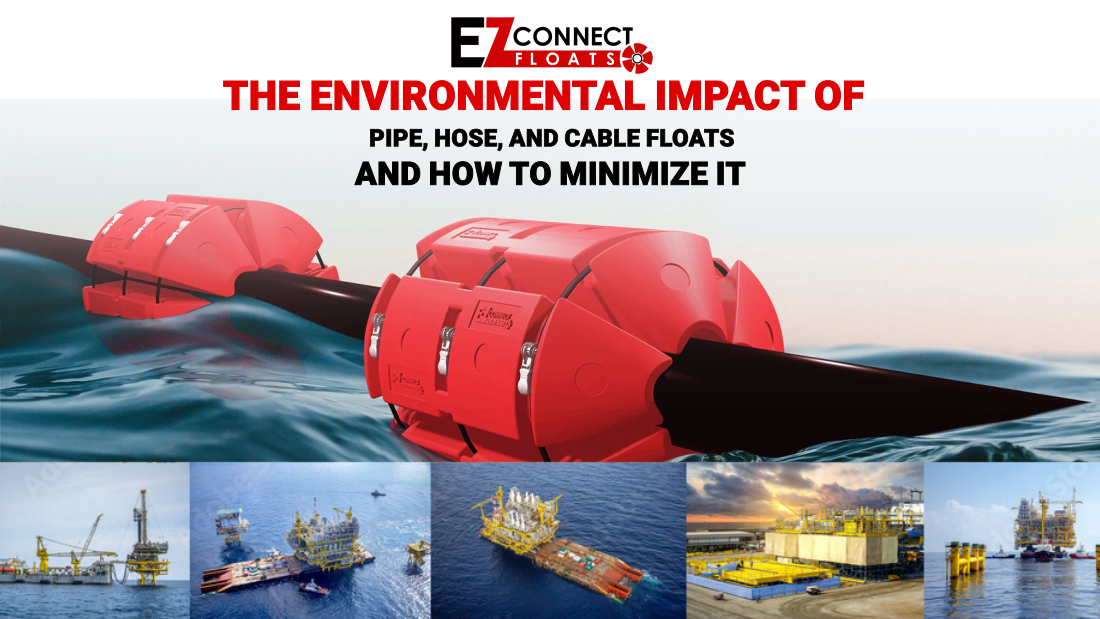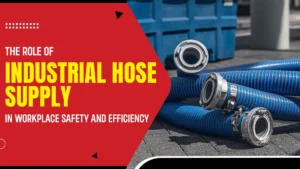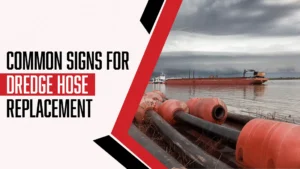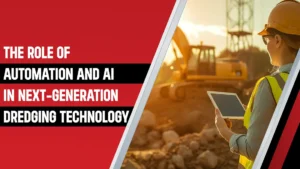
Pipe, Hose, and Cable Floats Sustainability | EZ Connect Floats
In the vast expanse of our oceans and waterways, an often-overlooked contributor to environmental degradation lurks beneath the surface: pipe, hose, and cable floats. While these seemingly innocuous flotation devices serve crucial functions in various industries, their disposal and usage can have significant ecological repercussions. However, the good news is that there are practical steps we can take to minimize their environmental impact and foster sustainability in our marine environments.
Understanding the Issue
Pipe, hose, and cable floats are commonly used in marine industries such as aquaculture, dredging, and offshore energy production. These pipe floats provide buoyancy, support, and protection for submerged pipes, hoses, and cables, ensuring their stability and functionality. However, their widespread usage has led to concerns about their environmental footprint.
One of the primary environmental impacts associated with these hose floats is their contribution to plastic pollution. Many of these cable floats are made from non-biodegradable materials such as polyethylene and polyurethane, which can persist in the marine environment for decades, posing a threat to marine life through ingestion, entanglement, and habitat destruction.
Furthermore, the manufacturing process of these pipe floats often involves the extraction of raw materials, energy consumption, and emissions of greenhouse gases and other pollutants, further exacerbating their environmental footprint.
Minimizing the Impact
While the environmental impact of pipe, hose, and cable floats is significant, several strategies and alternatives can help mitigate their adverse effects:
- Material Selection: Opt for hose floats made from recycled or biodegradable materials whenever possible. Manufacturers increasingly offer eco-friendly alternatives that reduce reliance on virgin plastics and minimize environmental harm.
- Design Innovation: Encourage the development of innovative designs that prioritize durability, reusability, and recyclability. Modular float systems, for example, allow for easier maintenance, repair, and replacement, extending their lifespan and reducing waste.
- Proper Disposal: Implement appropriate disposal and recycling practices to prevent cable floats from ending in landfills or the ocean. Establish recycling programs or collaborate with specialized companies that responsibly process and repurpose used pipe floats.
- Education and Awareness: Raise awareness among industry stakeholders, policymakers, and the general public about the environmental impact of pipe, hose, and cable floats. Promote sustainable practices and advocate for regulations prioritizing environmental conservation in float manufacturing and usage.
- Alternative Solutions: Explore alternative solutions such as using natural materials like bamboo or cork for buoyancy or employing innovative technologies like underwater anchoring systems that eliminate the need for pipe floats in specific applications.
Embracing Sustainability
In an era where environmental sustainability is paramount, addressing the impact of pipe, hose, and cable floats is essential for the health and resilience of our marine ecosystems. By adopting sustainable practices, investing in eco-friendly technologies, and fostering collaboration across industries, we can minimize the environmental footprint of these hose floats and pave the way for a more sustainable future.
Conclusion:
The environmental impact of pipe, hose, and cable floats underscores the urgent need for proactive measures to minimize harm to our oceans and waterways. While these floats are vital in various industries, their disposal and usage must be approached carefully for environmental sustainability.
By embracing sustainable practices such as material innovation, proper disposal, and education, we can mitigate the adverse effects of these floats and foster a more harmonious relationship between industry and the environment. Additionally, exploring alternative solutions and investing in eco-friendly technologies can further reduce our reliance on conventional float materials and promote the conservation of marine ecosystems.
Have Questions?
Get in touch with us now!
Related Blogs

The Role of Industrial Hose Supply in Workplace Safety and Efficiency
In high-stakes industries such as oil and gas, mining, manufacturing, dredging, and defense, industrial hoses serve as vital connectors in daily operations. Whether transferring hazardous

Common Signs For Dredge Hose Replacement
Dredge hose is an essential component in mining, oil and gas, and heavy industries, where it is used to transport materials such as sediment, slurry,

The Role of Automation and AI in Next-Generation Dredging Technology
Dredging technology has undergone a quiet but powerful transformation over the past decade. A purely mechanical process, which included heavy machinery, manual supervision, and reactive
